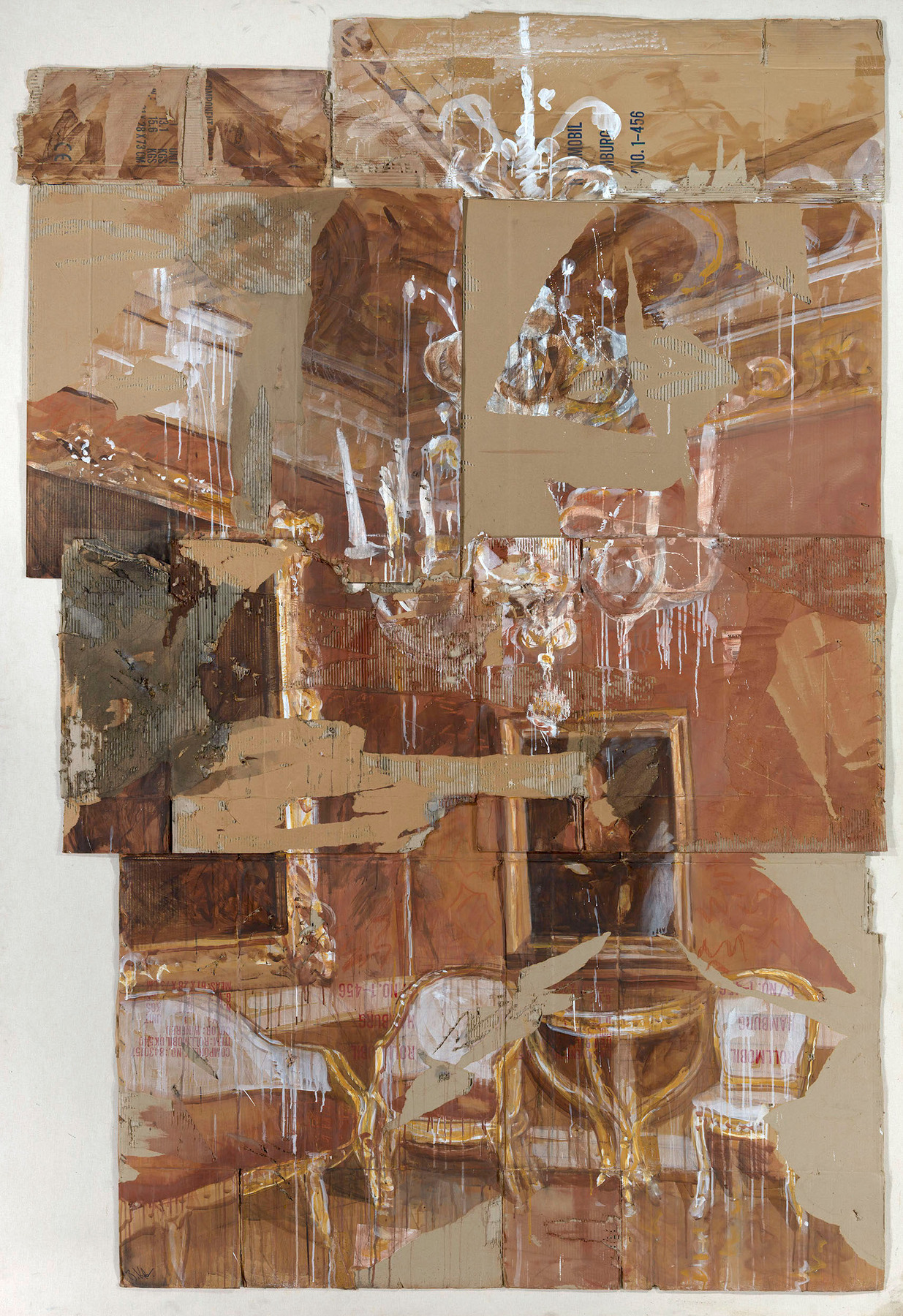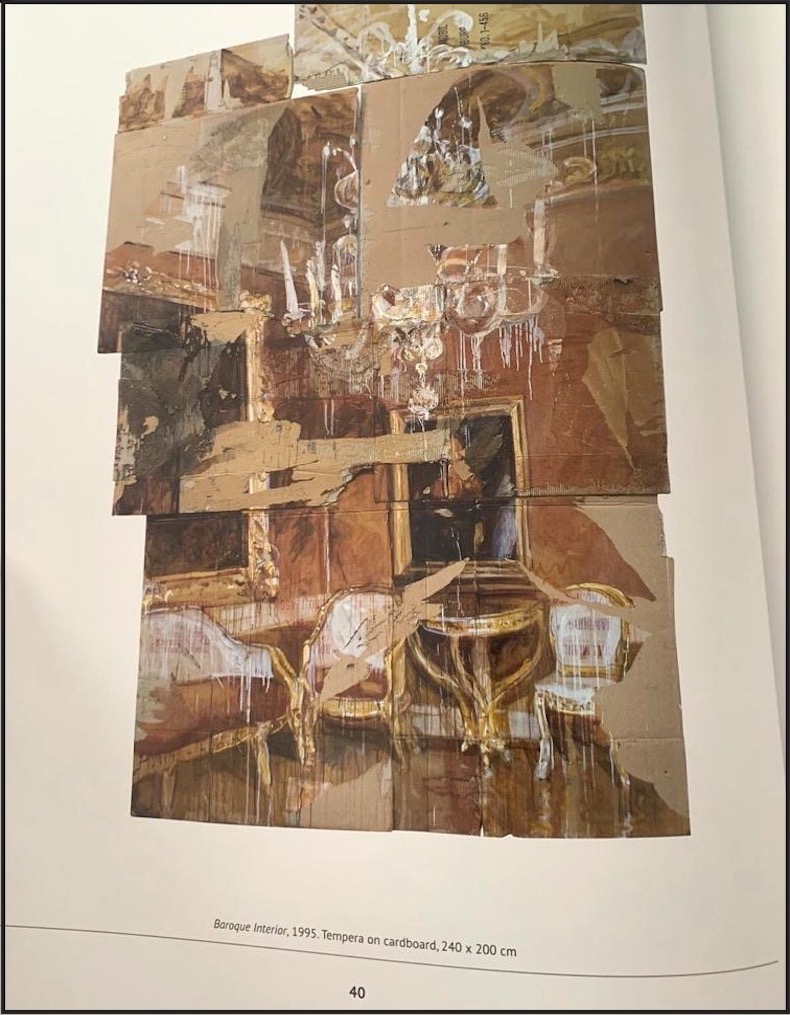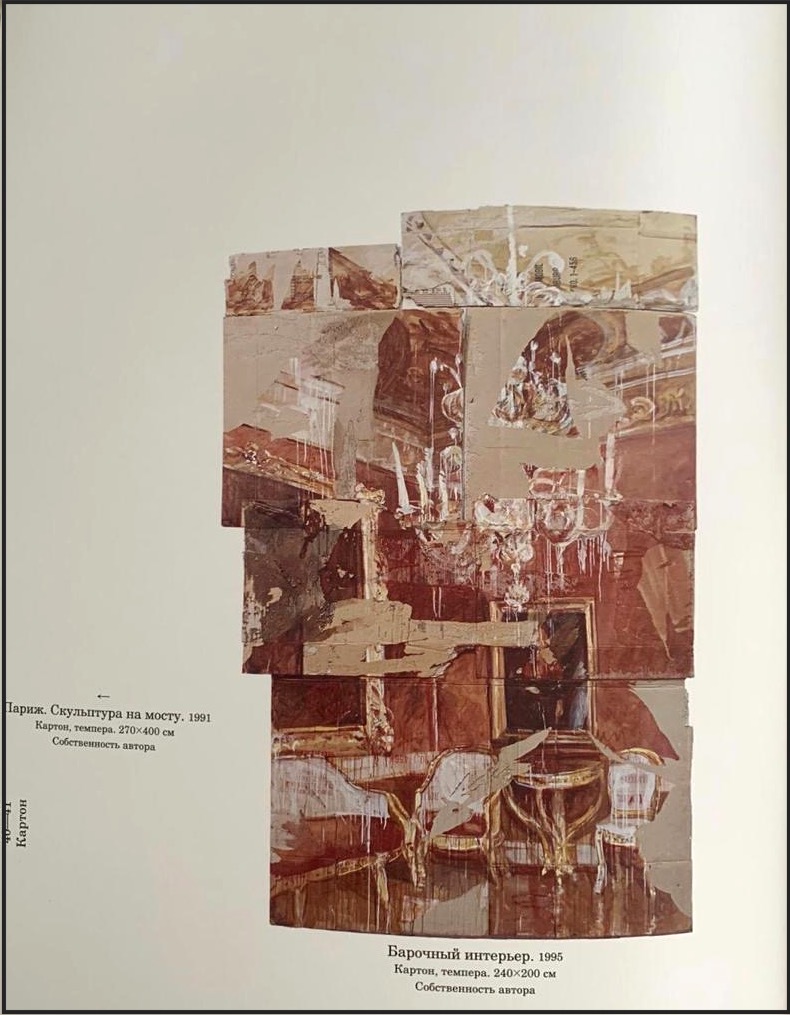Catalogue: Important Russian Art Auction
15 October 2020

212. KOSHLYAKOV, VALERY (B. 1962)
Baroque Interior, signed, also further signed twice, titled in Russian and English and dated 1995 on the reverse.
Tempera on cardboard, laid on canvas, laid on panel, 240 by 200 cm (cardboard size); 311 by 216 cm (canvas size).
60,000–90,000 GBP
Provenance: Private Collection, France.
Authenticity of the work has been confirmed by the artist.
Exhibited: Transformationen (V. Koshlyakov, K. Pobedin, T. Nasarenko), Stadlische Galerie, Stuttgart, 1996.
Valery Koshlyakov, Museum of Russian Impressionism, Moscow, 10 September–27 November 2016.
Literature: Exhibition catalogue, Valery Koshlyakov, Milano, Silvana Editoriale, 2016, p. 40, illustrated.
Olga Golovanova, Valery Koshlyakov, Perm Museum of Contemporary Art, 2010, p. 40, illustrated.
Baroque Interior was painted in Moscow in 1995 at the famous squat in Baumanskaya Street, where the artist lived from 1993 to 1999 before leaving for Europe. Painting on cardboard came to be a Valery Koshlyakov’s hallmark, and his works from that period now feature in the Tretyakov Gallery and the Pompidou Centre.
Koshlyakov’s main invention during the 1990s was his fresco painting, executed on flattened cardboard box panels. The artist used the texture of corrugated cardboard, as well as the huge scale it offered – something that enabled him to create works of monumental proportions. He would line the walls of a room in a communal flat with cardboard and paint subjects derived from high classical culture on it. The very language of a painting on cardboard incorporated both a lofty spiritual subject and brutal damage to the painting itself, and the tearing out of pieces from the image mimicked the artist’s attitude towards the loss and destruction of the old culture, which he seemed to be restoring. The pieces of corrugated cardboard that had been torn out created the desired texture, and the disappearing image was reinstated, thus mimicking action to restore it.
Baroque Interior comes from a series of palace interiors, with this picture showing the inside of a Venetian palazzo. “Actually, the painting comes across as the memory of a picture: it teeters on the brink of preservation and disappearance, sharpness and near-faintness by integrating reality and illusion, texture and mimesis, and blending them into an indivisible unity. The picture bears witness to the absolute permanence of the reified symbol, and at the same time to its transience, to the mortal life of the fabric of culture, yet also to the immortality of its power,” as Mikhail Dmitriev put it.
Exhibitions of “architectural classics on cardboard” were staged in Moscow and St Petersburg, and later at numerous provincial museums in Russia. The apotheosis of the cardboard-painting project was Polyhymnia, a project shown at the Russian Pavilion at the Venice Biennale, where Koshlyakov represented Russia. Works from this series were subsequently displayed at the Guggenheim Museum in New York and Bilbao and were purchased by the Pompidou Centre and the Tretyakov Gallery.


Notes on symbols:
* Indicates 5% Import Duty Charge applies.
Ω Indicates 20% Import Duty Charge applies.
§ Indicates Artist's Resale Right applies.
† Indicates Standard VAT scheme applies, and the rate of 20% VAT will be charged on both hammer price and premium.